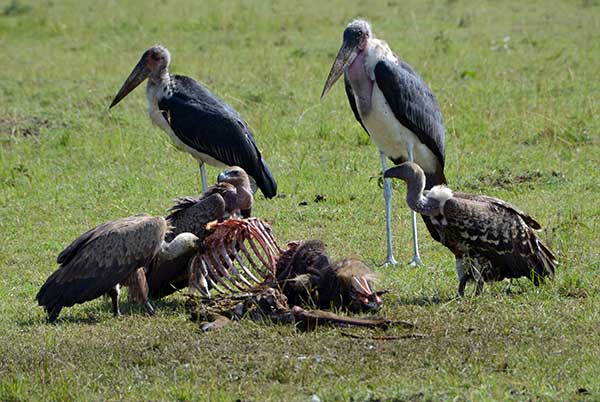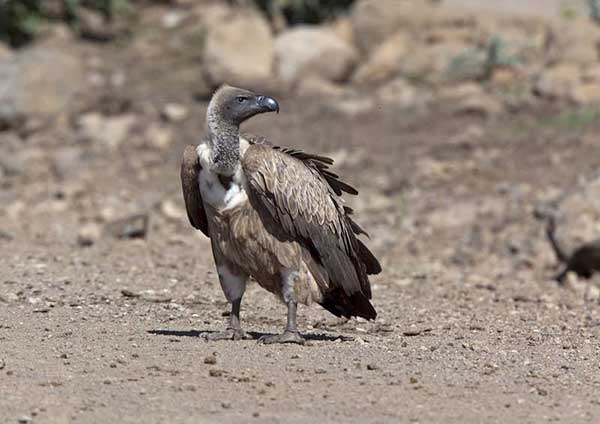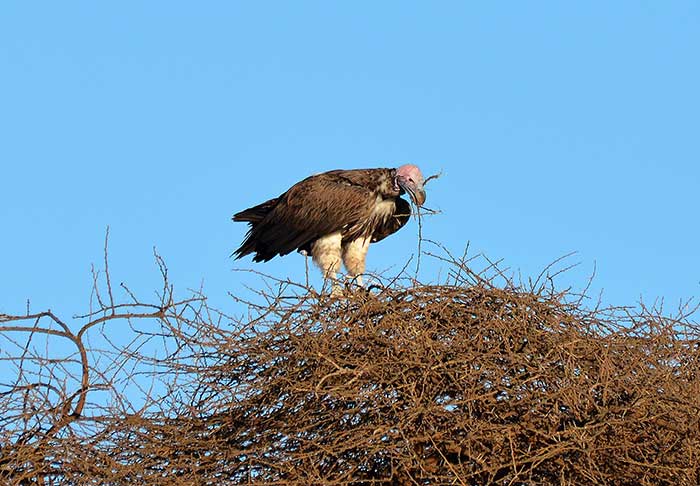By Rutendo Washoma
Vultures are birds of prey that scavenge on animal carcasses on the ground. There are 23 vulture species in the world, 6 of which are found in Zimbabwe. These six species are: the White-backed Vulture, Lappet-faced Vulture, White-headed Vulture, Hooded Vulture, Cape Vulture and Palmnut Vulture. The White-backed is the most common vulture in Zimbabwe.
It is monogamous (meaning that it pairs up with one bird) and nests on tree-tops in loose colonies. The Lappet-faced is the largest vulture in Zimbabwe. It favours thorn veld in drier regions and is largely found singly. The Cape Vulture is the second largest vulture in Zimbabwe. The species frequents grasslands and semi-arid parts of the country.
The White-headed is the most attractive of Africa’s 11 species of vultures. The species is largely confined to protected areas. It scavenges but also hunts medium-small vertebrates. The Hooded Vulture is small and dark brown. It is mostly the first to arrive at a carcass but hangs onto the fringes in the presence of larger the larger species. The Palmnut is the smallest of Zimbabwe’s vultures and is not a true vulture. It is confined to the Eastern Highlands and Lowveld where it nests in palms and feeds on the trees` fruit.

Vultures play a fundamental role in our ecosystems; they form an important part of the food chain, they feed on carcass of wildlife and domestic animals thereby preventing the spread of diseases such as anthrax, botulism and cholera, which are highly contagious to humans and animals. By being “nature’s clean-up crew,” vultures keep the environment clean. In addition, because vultures are attracted to carrion, they indirectly help authorities identify illegal poaching activities. Vultures also have increased ecotourism value (bird-watching).
In Zimbabwe all vultures are listed as specially protected animals under the 6th schedule of the Parks and Wildlife Act. Therefore it is illegal to kill a vulture, even accidentally. However, even with this legislation in place vulture populations continue to rapidly decline. The major threats leading to the declines are: poisoning of elephants or rhinos by poachers for ivory; poisoning for pest animal control – for example, rodent and unintentional poisoning from misuse of veterinary and agricultural drugs; the use of vultures in the umuthi trade, in which vulture body parts are be used for superstitious purposes; changes in land use from pastoralism and wildlife ranching, to cultivation or urbanisation; scarcity of food and nesting sites; and collision of the vultures with power-lines when in flight.

Each year, the first Saturday of September is International Vulture Awareness Day (IVAD). Vultures are an ecologically vital group of birds that face a range of threats in many areas where they occur: populations of many species are under pressure, and some species are facing extinction. Thus IVAD is set aside to raise awareness of the vultures’ plight, and highlight conservation measures that need to be implemented.
LET’S KEEP OUR VULTURES ROAMING THE SKIES OF ZIMBABWE
Report any suspected poisoning to relevant authority or Birdlife Zimbabwe
Report incidences of vulture parts being sold
Record sightings, locations of active nesting sites and submit photos of vulture activity.
Go to www.birdlifezimbabwe.org for contact details

